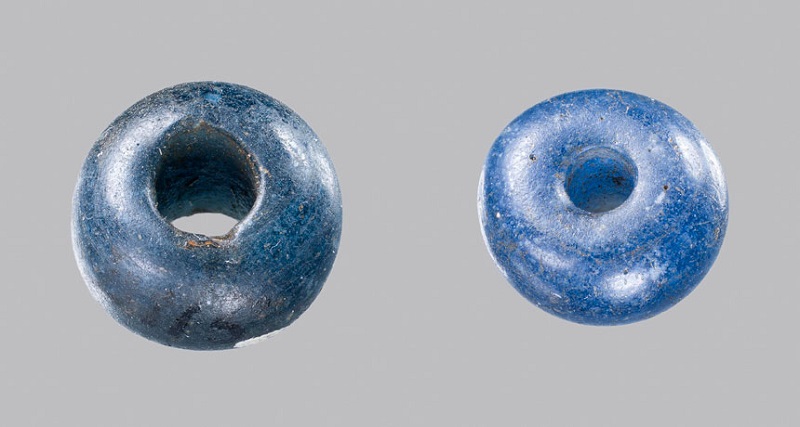
A post from over a year ago has been making the rounds again, with the headline “No-one Could See The Color Blue Until Modern Times.” The article from Business Insider contains some interesting observations on the connection between language and colour perception, but all people are going to remember is the (erroneous) headline.
Fact: people could see the colour blue before modern times. That much is completely, 100% non-debatable. Physiologically, we have been able to see the colour blue for thousands and thousands of years. What’s been questioned is whether we recognized it as a distinct category of colour, and that answer is more complicated.
Last year, Language Log tried and failed to find the study that the article cites — the one with the green squares and blue square, about how the Himba people couldn’t tell the difference between the blue square and the green squares, but you can’t tell the difference between the one green square and the other green squares because you don’t have a word for both greens. But even without it, they pointed out that it was a pretty bizarre comparison: when you take the RGB values of the colours, the visual difference between the blue and green is between 6-8 and 28-30 times that of the green to green comparison.
Seriously, go read the article. It looks like somebody’s been playing fast and loose with the truth.
Part of why he couldn’t find the article might be because he was searching for the wrong name — the study was apparently by Jules Davidoff, not Serge Caparos — But I still couldn’t find the experiment mentioned. What I did find was this article from 2012, entitled “Perceptual and categorical judgements of colour similarity.” It does involve the Himba, and colour perception, and the blue-green range. It doesn’t, however, involve subjecting Himba people to the “visual search” experiment, but rather has them perform a blue-green colour categorization task.
The Himba have five colours, and don’t have a boundary between what we think of as blue and green. So in this experiment the researchers gave them a “match to sample” task — basically saying now here’s one colour, here’s another, and then giving them a series of colours between the two to see how subjects sorted them. They shifted the central values “greener” and “bluer,” and found that in that task, both Himba and westerners tended to ignore colour boundaries and divide the colours between the two equally. That is to say that, for the Himba just as for you and me, it’s easy to sort colours, which are on a spectrum, without naming them, and find the middle point yourself pretty easily.
I still don’t know about the experiment they’re talking about, because, as the Language Log folks point out, either the experiment was abandoned, failed peer review, or we just couldn’t find it (maybe because of my poor search skills, maybe because of shoddy reporting).
What I do know is that recent research shows that there was a trade route from Scandinavia down to the Middle East more than 3000 years ago, in which amber from the north was traded for blue glass beads from the south. Regardless of what they called them, these deep cobalt-blue beads were of significant value if they were worth trading for over great distances, possibly because not a hell of a lot of things were blue in the north, except the sky when it’s not cloudy.
And by the way, the fact that one researcher’s daughter couldn’t name the colour of the sky when she hadn’t been taught the word for it? She didn’t say green. She didn’t know what to call it because she didn’t know the word for it. It sounds to me as though she had a mental category for the colour, but not the vocabulary. An informal study with a sample size of one doesn’t tell us much.
Anyhow, it’s pretty clear words shape how we categorize things, especially things with no clear dividing lines like colour spectra. The very existence of the Himba’s five-colour categorization system is evidence enough of that. Where I remain to be convinced is that people can’t see a colour if they can’t name it.
But hey, if you can find the study, send it my way.
***
Richard Ford Burley is a human, writer, and doctoral candidate at Boston College, as well as an editor at Ledger, the first academic journal devoted to Bitcoin and other cryptocurrencies. In his spare time he writes about science, skepticism, feminism, and futurism here at This Week In Tomorrow.
